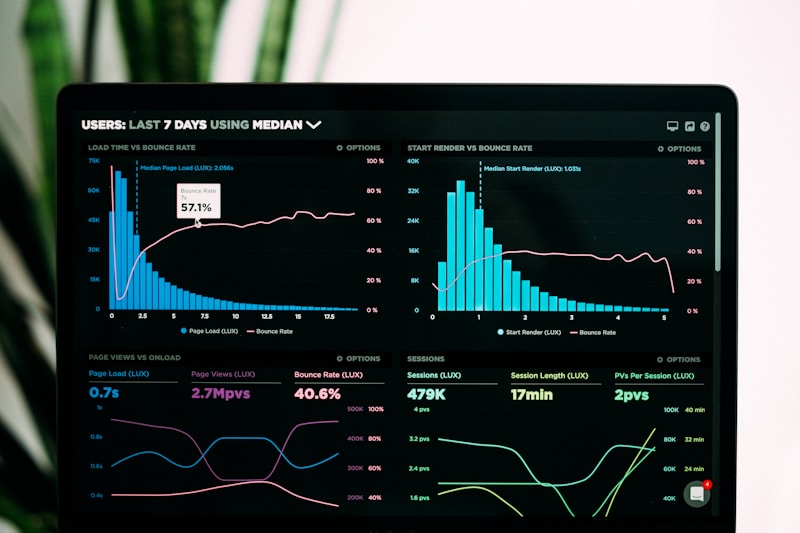As artificial intelligence becomes increasingly sophisticated, medical school admissions committees are adapting their evaluation processes to maintain the integrity of applications. The question "do med schools use AI detectors" has become a pressing concern for aspiring physicians navigating the competitive landscape of medical school admissions. With acceptance rates at top medical schools hovering around 2-3%, every aspect of your application matters, including the authenticity of your personal statement and essays.Recent surveys indicate that over 60% of medical schools have implemented or are considering implementing AI detection tools in their admissions process. This shift reflects growing concerns about the authenticity of application materials in an era where AI writing assistants are readily available. Understanding how these detection systems work and what they mean for your application is crucial for success in the medical school admissions process.
Understanding AI Detectors in the Context of Med School Essays
AI detectors in medical school admissions serve as sophisticated gatekeepers, designed to identify patterns and characteristics typical of machine-generated content. These tools analyze various linguistic features, writing patterns, and stylistic elements that distinguish human writing from AI-generated text. Medical schools implement these systems to ensure that personal statements and secondary essays genuinely reflect an applicant's voice, experiences, and motivations for pursuing medicine.
The implementation of AI detection technology in medical school admissions represents a fundamental shift in how committees evaluate authenticity. These systems examine multiple dimensions of writing, including sentence structure variety, vocabulary complexity, emotional depth, and the presence of personal anecdotes that AI typically struggles to replicate convincingly. Understanding these detection mechanisms helps applicants appreciate why genuine, personally crafted essays remain irreplaceable in the admissions process.
Medical schools particularly focus on detecting AI-generated content because personal statements and essays serve as windows into an applicant's character, critical thinking abilities, and communication skills—all essential qualities for future physicians. The ability to articulate complex thoughts, demonstrate empathy, and convey authentic experiences through writing directly correlates with the interpersonal skills required in patient care.
Common Types of AI Detection Tools Used in Admissions
Medical school admissions committees employ various sophisticated AI detection tools to maintain the integrity of their application review process. These tools range from basic plagiarism checkers to advanced machine learning algorithms capable of identifying subtle patterns in AI-generated text. Understanding these different detection methods helps applicants appreciate the comprehensive nature of authenticity verification in modern admissions processes.
Linguistic Pattern Analysis
Explanation: Linguistic pattern analysis tools examine the structural and stylistic elements of writing to identify characteristics typical of AI-generated content. These systems analyze factors such as sentence length variation, vocabulary diversity, transition patterns, and the distribution of grammatical structures throughout the text. They create statistical models of human writing patterns and compare submitted essays against these benchmarks to flag potential AI involvement.
Advantages: These tools excel at identifying uniformity in writing style that often characterizes AI-generated content. They can detect when sentence structures are too consistent, when vocabulary usage follows predictable patterns, or when the emotional tone remains artificially stable throughout a piece. This makes them particularly effective at catching essays that lack the natural variation and imperfection inherent in human writing.
Limitations: Linguistic pattern analysis can sometimes flag legitimate human writing, especially from non-native English speakers or those with highly formal writing styles. Additionally, as AI models become more sophisticated at mimicking human variation, these tools may struggle to maintain accuracy. False positives can occur when applicants naturally write in a structured, consistent manner.
Safety Considerations: Applicants should focus on writing naturally and authentically rather than trying to "game" these systems. Varying sentence structure organically, incorporating personal anecdotes with specific details, and allowing your genuine voice to shine through provides the best protection against false positives while ensuring your essay resonates with admissions committees.
Plagiarism and Originality Checkers
Explanation: Modern plagiarism detection tools have evolved beyond simple text matching to include AI content detection capabilities. These systems compare submitted essays against vast databases of published content, previously submitted applications, and known AI-generated text samples. They utilize advanced algorithms to identify not just direct copying but also paraphrasing patterns and structural similarities that suggest AI assistance.
Advantages: These tools provide comprehensive coverage by checking against multiple sources simultaneously. They can identify when applicants have used AI to rephrase existing content or when essays contain passages that closely resemble AI-generated responses to common prompts. This dual functionality helps admissions committees maintain both originality and authenticity standards.
Limitations: Plagiarism checkers may struggle with common phrases or experiences that many medical school applicants share. For instance, descriptions of shadowing experiences or volunteer work might trigger similarity alerts despite being genuine. These tools also may not detect highly sophisticated AI usage that generates truly original content based on unique prompts.
Safety Considerations: Ensure your essays are entirely original and avoid using templates or sample essays as guides for structure or phrasing. When describing common pre-medical experiences, focus on your unique perspective and specific details that differentiate your story. Always run your own plagiarism check before submission to identify any inadvertent similarities.
Machine Learning-Based Authorship Verification
Explanation: Machine learning-based authorship verification represents the cutting edge of AI detection technology. These systems use neural networks trained on millions of writing samples to identify subtle patterns that distinguish human writing from AI-generated content. They analyze features invisible to human readers, such as word choice probability distributions, syntactic complexity patterns, and semantic coherence across paragraphs.
Advantages: These advanced systems can detect sophisticated AI usage that other tools might miss. They continuously learn and adapt to new AI writing models, maintaining effectiveness as technology evolves. Machine learning tools can also identify when different sections of an essay appear to have different authors, flagging potential partial AI assistance.
Limitations: The complexity of these systems can lead to opacity in decision-making, making it difficult for applicants to understand why their essay might be flagged. They may also require substantial computational resources and expertise to implement effectively, potentially limiting their use to larger institutions or centralized application services.
Safety Considerations: Write your entire essay yourself, maintaining consistency in voice and style throughout. Avoid using AI tools even for brainstorming or outlining, as this can inadvertently influence your writing patterns. If you receive writing assistance from tutors or advisors, ensure they're helping you develop your own ideas rather than providing pre-written content.
Cross-Referencing with Essay Databases
Explanation: Cross-referencing systems compare submitted essays against extensive databases of previous medical school applications, published essays, and known AI-generated content. These databases may include submissions from multiple application cycles, essays from various application services, and content from essay mills or writing services. The systems identify similarities in structure, theme development, and specific phrases that might indicate recycled or artificially generated content.
Advantages: Database cross-referencing provides historical context that other detection methods lack. These systems can identify when applicants submit recycled essays from previous application cycles or when multiple applicants submit suspiciously similar content. They're particularly effective at catching essays purchased from writing services or generated using common AI prompts.
Limitations: These systems require extensive, well-maintained databases to function effectively. They may flag legitimate similarities when applicants discuss common experiences or when advised to structure essays in standard formats. Privacy concerns also arise regarding the long-term storage and use of applicant essays.
Safety Considerations: Always write fresh, original content for each application, even when applying to multiple schools. Tailor your essays to each institution's specific prompts and values. If reapplying after an unsuccessful cycle, substantially revise your essays rather than resubmitting previous versions, as this demonstrates growth and continued commitment.
Potential Risks and Limitations of Relying on AI Detectors for Medical School Applications
While AI detectors serve an important purpose in maintaining application integrity, their implementation in medical school admissions raises significant concerns about fairness and accuracy. False positives can devastate qualified applicants, particularly those from non-traditional backgrounds or international students whose writing styles may differ from typical patterns. These tools may inadvertently discriminate against applicants who naturally write in more formal or structured ways, or those who have received legitimate writing support to improve their English language skills.
The lack of transparency in AI detection algorithms presents another critical challenge. Most detection tools operate as "black boxes," providing little insight into how they reach their conclusions. This opacity makes it difficult for applicants to understand why their genuine work might be flagged and limits their ability to appeal false accusations. Medical schools must balance the need for authenticity verification with the risk of unfairly excluding qualified candidates based on algorithmic decisions.
Furthermore, the rapid evolution of AI technology creates an arms race between detection tools and generation models. As AI becomes more sophisticated at mimicking human writing, detection tools must constantly evolve to maintain effectiveness. This dynamic landscape means that detection accuracy can vary significantly, and tools that work today may become obsolete tomorrow. Medical schools risk making admissions decisions based on potentially unreliable technology.
The psychological impact on applicants cannot be overlooked. Knowledge that AI detectors scrutinize their essays may cause unnecessary anxiety and self-censorship, leading applicants to write less naturally or avoid using helpful writing resources entirely. This climate of suspicion can undermine the genuine self-expression that medical schools seek in personal statements, paradoxically defeating the purpose of maintaining authenticity.
How Applicants Can Ensure Authenticity and Avoid AI Detector Issues
Creating authentic, compelling medical school essays that pass AI detection requires a strategic approach centered on genuine self-expression and careful preparation. The key lies not in trying to outsmart detection systems but in producing writing that naturally reflects your unique voice, experiences, and motivations for pursuing medicine. By following best practices for authentic writing, you can create essays that resonate with admissions committees while avoiding any concerns about AI involvement.
Start your essay writing process early, allowing ample time for brainstorming, drafting, and revision. Begin by reflecting deeply on your experiences, creating detailed lists of specific moments, conversations, and realizations that shaped your path to medicine. Use concrete sensory details and emotional reflections that only you could provide. When describing patient interactions, include specific dialogue, describe the setting vividly, and explain how the experience affected you personally. These unique details are difficult for AI to fabricate convincingly and demonstrate authentic engagement with your experiences.
Develop a consistent personal voice throughout your application materials. Your writing style should remain recognizably yours across all essays, reflecting your personality, background, and communication style. Include colloquialisms, cultural references, or personal metaphors that feel natural to you. Don't be afraid to show vulnerability or admit challenges—these human elements add authenticity that AI struggles to replicate. Consider reading your essays aloud to ensure they sound like you speaking.
Seek feedback from trusted advisors, mentors, or writing centers, but maintain ownership of your writing. When incorporating feedback, rewrite suggestions in your own words rather than copying them directly. Document your writing process by saving multiple drafts, which can serve as evidence of authentic authorship if questions arise. Keep notes about your brainstorming sessions and the evolution of your ideas.
Avoid any use of AI writing tools, even for seemingly innocent purposes like grammar checking or brainstorming. While tools like Grammarly for basic spelling and grammar are generally acceptable, avoid any AI-powered features that suggest rewrites or generate content. Instead, use traditional resources like writing handbooks, style guides, and human tutors who can guide your thinking without providing pre-written content.
Practice writing regularly to develop confidence and fluency in expressing your thoughts. Keep a journal about your pre-medical experiences, reflecting on patient encounters, research projects, or volunteer work. This practice helps you develop a natural writing rhythm and builds a reservoir of detailed memories you can draw upon in your essays. Regular writing also helps you become more comfortable with your authentic voice.
When addressing common medical school essay topics, find unique angles that reflect your individual perspective. Rather than writing generic statements about wanting to help people, provide specific examples of how you've demonstrated this commitment. Connect your experiences to broader themes in healthcare while maintaining focus on your personal journey. Use transitions that feel natural to your speaking style rather than formulaic academic phrases.
Conclusion
The question "do med schools use AI detectors" reflects a significant shift in medical school admissions as institutions adapt to technological challenges while maintaining their commitment to identifying authentic, qualified future physicians. Understanding AI detection tools and their implications empowers applicants to approach their essays with confidence, focusing on genuine self-expression rather than anxiety about false positives. The various detection methods—from linguistic pattern analysis to machine learning-based verification—underscore the comprehensive approach schools take to ensure application integrity.
However, the limitations and potential risks of AI detectors remind us that technology should supplement, not replace, holistic admissions evaluation. As applicants, your best strategy remains simple yet powerful: write authentically, share your unique experiences with specific detail, and trust that your genuine passion for medicine will shine through. Medical schools ultimately seek students who can communicate effectively, think critically, and connect with patients—qualities best demonstrated through honest, personally crafted essays.
In an environment where AI writing tools are becoming routine—even in areas like med school essays—the need to preserve authenticity and human authorship has never been more pressing. Aigcchecker addresses this challenge with an advanced analysis model capable of examining text in detail and determining whether it was produced by mainstream AI systems such as ChatGPT or Gemini. Whether evaluating academic submissions, blog content, business reports, or AI-detector-sensitive materials like medical school application essays, it provides clear and reliable results. This helps users maintain confidence in their work and uphold the originality and integrity of their written content.
Moving forward, the landscape of AI detection in medical school admissions will continue evolving. Successful applicants will be those who embrace authentic writing practices, start early, and focus on conveying their genuine motivations for pursuing medicine. By understanding how AI detectors work and following best practices for authentic writing, you can confidently submit applications that reflect your true potential as a future physician.
FAQs
What is an AI detector for med school essays?
An AI detector for med school essays is a sophisticated software tool that analyzes application essays to identify whether content was written by a human or generated by artificial intelligence. These detectors examine various aspects of writing including linguistic patterns, sentence structure, vocabulary usage, and stylistic consistency to flag potentially AI-generated content. Medical schools use these tools to ensure that personal statements and secondary essays genuinely reflect an applicant's own voice, experiences, and writing abilities, which are crucial indicators of communication skills needed in medical practice.
Why are admissions committees using AI detection tools?
Admissions committees implement AI detection tools to maintain the integrity and fairness of the application process. With the increasing accessibility of AI writing assistants, schools need to ensure that essays genuinely reflect each applicant's unique perspective, critical thinking abilities, and communication skills. These qualities are essential for future physicians who must articulate complex medical information, demonstrate empathy, and build trust with patients. Additionally, detecting AI-generated content helps maintain a level playing field among applicants and preserves the value of the traditional application essay as a meaningful assessment tool.
How can I make sure my med school essay passes AI detection?
To ensure your medical school essay passes AI detection, focus on authentic, personal writing that includes specific details only you could provide. Write about concrete experiences using sensory details, exact dialogue, and personal reflections. Maintain a consistent voice throughout your essay and avoid using any AI tools for writing, editing, or brainstorming. Start early to allow time for natural revision, seek feedback from human mentors rather than AI assistants, and save multiple drafts as evidence of your writing process. Include unique perspectives, cultural references, and personal anecdotes that reflect your individual journey to medicine.
How should I choose between writing assistance tools and manual drafting?
Always choose manual drafting for medical school essays. While basic spell-checkers and grammar tools like the non-AI features of word processors are acceptable, avoid any AI-powered writing assistants, paraphrasing tools, or content generators. Instead, utilize human resources such as pre-health advisors, writing center tutors, trusted mentors, or peers who can provide feedback without writing content for you. These human interactions help develop your ideas while maintaining your authentic voice. Manual drafting, though more time-consuming, ensures your essay genuinely reflects your thoughts and abilities while eliminating any risk of AI detection issues.
What are common mistakes applicants make that trigger AI detectors?
Common mistakes that trigger AI detectors include using overly formal or generic language lacking personal voice, writing with unnaturally consistent sentence structures, incorporating clichéd phrases or templated responses, and failing to include specific, personal details. Other red flags include sudden shifts in writing style within the same essay, using sophisticated vocabulary inconsistently, lacking emotional variation or personal reflection, and submitting essays that closely resemble common online templates. Additionally, using AI tools for any part of the writing process, even seemingly innocent tasks like summarizing experiences or improving paragraph transitions, can leave detectable patterns that trigger these systems.








